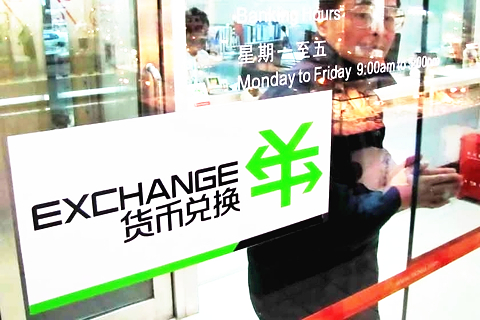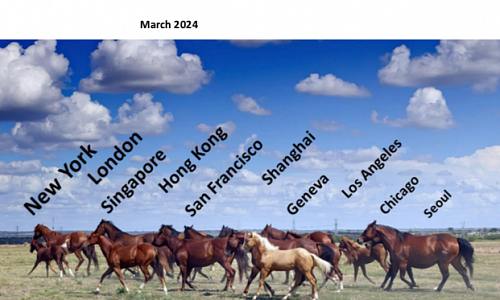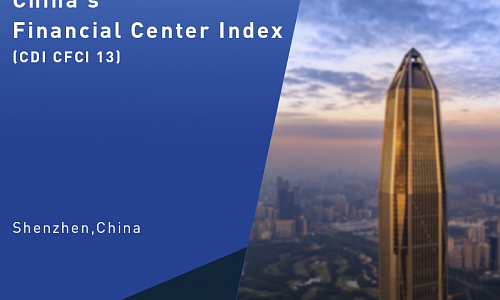
2017 - Insights
Author: Song Ding, Senior Research Fellow of CDI
Editor’s Note: There are several issues to be considered as for Xiongan New Area which is aimed at accepting non-capital functions from Beijing, exploring a new model of optimized development in densely-populated areas, and restructuring the urban layout in the Beijing-Tianjin-Hebei region.
 The Establishment of Xiongan New Area is expected to help phase out some non-capital functions from Beijing, explore a new model of optimized development in densely-populated areas, and restructure the urban layout in the Beijing-Tianjin-Hebei region. However, there are several issues to be considered.
The Establishment of Xiongan New Area is expected to help phase out some non-capital functions from Beijing, explore a new model of optimized development in densely-populated areas, and restructure the urban layout in the Beijing-Tianjin-Hebei region. However, there are several issues to be considered.
Strategic Positioning and Industrial Development
The most practical functional positioning of the Xiongan New Area is to accept non-capital functions unloaded from Beijing and to foster a new growth engine for the Beijing-Tianjin-Hebei city clusters.
In transferring the "non-capital" functions out of Beijing, it is essential to relocate state-owned enterprises especially the lower-end traditional industry chains of these enterprises. If these enterprises and industries were simply moved to the Xiongan New Area, then the new area would be home to the unwanted and lower-end industries and over-staffed state-owned enterprises of Beijing. This would be going against the positioning of the new area. Despite institutional reform and industrial upgrading in the process of the relocation, it would be extremely difficult given the fact that these industries and enterprises have been developing for a very long time in Beijing with a lot of deep-seated problems. Major changes are unlikely to take place with the sudden and mass relocation to the new area.
Lessons from the Development of the Binhai New Area and Caofeidian
It is not the first time to establish a state-level development zone in the Beijing-Tianjin-Hebei region. Years ago, Tianjin set up the Binhai New Area with the hopes that it would become a leader in the integrated growth of the Beijing-Tianjin-Hebei region. Now more than ten years have passed, but the Binhai New Area has failed to achieve the initial strategic goals in terms of institutional reform and regional development. As to Caofeidian located in Tangshan, it also cherished the vision of transferring non-essential functions of Beijing, only to soon fall into predicament because of disadvantages in location, population, capital, industrial structure and operation mechanism, etc.
The development of the Binhai New Area and Caofeidian sends an important signal to the development of the Xiongan New Area, which is currently in the limelight. The new area is set up against the backdrop of huge pressure for transformation and upgrading of the Chinese economy. It is necessary to learn from the experiences in the development of the Binhai New Area and Caofeidian.
Paralleling Shenzhen Economic Zone and Pudong New District
The aim of Xiongan New Area is to rival two famous regions, namely, the Shenzhen Economic Zone and Pudong New District. However, this does not mean that the new area can copy the experience of Shenzhen and Pudong.
In terms of regional layout, Shenzhen borders Hong Kong, whose market economy and global background played a fundamental role in promoting Shenzhen’s growth, while Pudong is situated in Shanghai, the biggest financial center of China. Xiongan is different, as it is over 100 km away from Beijing and Tianjin. From the perspective of urbanization, Xiongan features a lower starting point and greater difficulties.
Time-wise, Shenzhen and Putong rose in the 1980s and 1990s respectively, at a time of China’s reform and opening up, during which the annual GDP growth rate could soar to a startling 20% and even 30%. The Xiongan New Area, however, is set up at a time of economic transformation and upgrading, which means that much of the experience of Shenzhen and Pudong are no longer applicable in the current situation.
In terms of industries, at the early stage of its development amidst an extremely weak national economy, Shenzhen was able to make full use of industries, technologies, capital and management of Hong Kong, all of which were the most advanced in China at that time. Pudong is home to advanced industries in Shanghai, including large numbers of headquarters of foreign-funded businesses. In contrast, the industries labeled “non-capital functions” of Beijing, most of which are neither high-tech nor advanced, would be moved to Xiongan. \
It is evident that if Xiongan is to parallel Shenzhen and Pudong, it should not only undertake the “non-capital functions” of Beijing, but also should build industry chains of high standards. This, however, poses great challenges.
Development Mode
The development mode of the Xiongan New Area shall firstly be supported by dedicated state policies, including the preferential policies in tax and personal income. Secondly, decentralization of power is needed to enable pilot reform by adopting a negative list. Thirdly, it shall build an institutional mechanism that truly depends on market. Fourthly, an industry framework shall be built to promote advanced industries as economic engines. Fifthly, it shall allow for experiments in legislation and law-based management. Lastly, a fundamental pattern featuring small government and big market shall be in place.
Xiongan is situated near the capital which has strong administrative power in northern China, where the role of market is relatively weak It is therefore not an easy task to break away from the ineffective development mode in the past. The only way out, nevertheless, is to tackle these difficulties and create a new development mode in northern China.
Environmental Security
Smog is prevalent across the Beijing-Tianjin-Hebei region, and Xiongan is no exception. Xiongan is home to Baiyangdian, the largest lake in North China, which had once dried up. Upon setting up, the new area faces daunting challenges in environmental protection. In the coming years, Xiongan will enter into a stage of rapid development, which will further increase the pressure on the environment. Globally, there have never been cases of vigorously developing economy which keeps the environment intact at the same time. Challenges for the environmental regulators of Xiongan are severe.
Author: Fan Gang, President of CDI
Editor’s Note: China’s economy has seen strong performance in the first quarter but still needs a few years for consolidation due to overcapacity and other problems caused by an overheated economy in the past. After that, China’s economy shall enter into a new round of growth, hopefully within the proper range of 7%-8%. China’s economic growth still has a long way to go since consumption boom is just beginning.
 A major engine for China’s economy is the constant rise of consumption, which has been growing at a faster rate than ever before. Consumption now accounts for around 62% of the GDP, up from around 52% in the past, and individual consumer spending is now around 45%, up from 35% in the past. Compared to developed countries, China still has huge potential. Consumption is taking up an ever bigger share of the economy and China’s consumption boom is just beginning. This trend is in line with the rule of economic development regarding the shift from production, savings and investment at the earlier stage of development to consumption at the later stage. The rise of China’s middle class and per capita GDP naturally contributes to the rise of various consumption. Despite the serviced-based consumption such as tourism and fitness, China's consumption is still largely characterized by a fairly huge proportion of material consumption. Therefore, China's manufacturing industry still has tremendous potential for development.
A major engine for China’s economy is the constant rise of consumption, which has been growing at a faster rate than ever before. Consumption now accounts for around 62% of the GDP, up from around 52% in the past, and individual consumer spending is now around 45%, up from 35% in the past. Compared to developed countries, China still has huge potential. Consumption is taking up an ever bigger share of the economy and China’s consumption boom is just beginning. This trend is in line with the rule of economic development regarding the shift from production, savings and investment at the earlier stage of development to consumption at the later stage. The rise of China’s middle class and per capita GDP naturally contributes to the rise of various consumption. Despite the serviced-based consumption such as tourism and fitness, China's consumption is still largely characterized by a fairly huge proportion of material consumption. Therefore, China's manufacturing industry still has tremendous potential for development.
China’s consumption growth is highly dependent on three social groups. The first consumer group is the younger generation. Firstly, young people are confident in their future income. Secondly, many young people are the only child in their family, which means they might have four elders in the family who tend to save money for the youngest generation and share a great deal of their burdens, providing them with the consumption support. The second consumer group is the financially well off retirees, who, with adequate time and money, are prepared to travel and enjoy life. The third consumer group is middle-age people. With the introduction of the second-child policy, education and housing in the school district will give a huge impetus to consumption. Therefore, the next round of China’s economic growth will rely more on consumption instead of investment.
The internet represents the greatest revolution in science and technology, reduces information cost, and brings new impetus for development. The internet successfully connects credit, risk, and data, promoting the growth of consumer finance and improving the ecosystem of the financial sector. Preferred terminology is “industries plus the internet”, and not “internet plus industries”. The regulatory authorities shall also actively adapt to new advances in technology so as to promote sustainable and healthy development of industries.
Author: Fan Gang, President of CDI
Editor’s Note: The economic downturn in recent years are cyclical fluctuations which are resulted from overheated economy and investment. Besides, the functional and economic significance of the consolidation period of soft landing should not be underestimated. In addition, material consumption is far from over and investment should aim at new consumption models.
 The economic downturns in recent years are cyclical fluctuations.
The economic downturns in recent years are cyclical fluctuations.
Though China’s economy has been declining for six consecutive years, last year has witnessed some improvements. Deflation, indicated by the Producer Price Index, has basically come to an end in the second half of last year. The main problems now include overcapacity, inventory backlog and debts which are typical cyclical problems and the results of overheated economy and investment. To deal with these problems, we must cut excessive industrial capacity and conduct destocking and deleveraging.
The functional and economic significance of the consolidation period of soft landing shall not be underestimated.
There are different ways to deal with crises. Some market economies have opted for hard landing to address problems by rapid and massive restructuring, yet China is inclined towards soft landing as we do not want to lower the growth rate so much as to turn sporadic problems into systemic ones. The advantage of soft landing is that there will be neither negative growth nor recession while the disadvantage is that it is more time consuming.
It may take some time to address problems such as overcapacity, inventory backlog, debts and supply-side structural reforms. Regarding investment, consolidations, mergers and acquisitions are necessary for a variety of industries to improve concentration, which is in line with the law of the market, namely, survival of the fittest. In this way, China's economic and industrial structure will be further improved and thus lay the foundation for future growth.
Material consumption is far from over and investment shall aim at new consumption models.
China's economic structure is changing as consumption takes up an ever greater proportion. When income reaches a certain level, consumption will start to accelerate. The internet enables consumption to extend to small towns and rural areas.
Material needs are far from being satisfied in China and material consumption is still the primary concern for most Chinese people. Therefore, China's manufacturing industry shall never be ignored from investment’s point of view. Instead, it has great development potential with further adjustment, concentration and upgrading. At the same time, service consumption is indeed increasing and demand is expanding. Spiritual consumption ranging from movies and entertainment to fitness, pension and financial services is on the rise, which is also a major trend.
Nowadays there are debates around the world on the replacement of human employment by artificial intelligence. But if we take a deeper look, we would find that human beings have been trying to use machines instead of human labor to improve productivity, thus bringing about huge space for development of leisure and entertainment consumption.
Overall, in terms of investment, the odds of success will be higher if we pay more attention to using new technologies to meet the needs of the market and adjust the business model according to consumer demand so that supply and demand would be more balanced.
Author: Fan Gang, President of CDI
Editor’s Note: at Session 24 Global Economy: Moving Beyond Sub-Health, Fan Gang said that high economic growth rate is unhealthy and China would like to lower its foreign reserves gradually.
 High economic growth is not necessarily healthy as China currently deals with the consequences of overheated economy in the past. China's central bank is also reluctant to hold $4 trillion in foreign reserves, hoping to lower it to the desired two trillion, yet the central bank does not want to see it happen overnight.
High economic growth is not necessarily healthy as China currently deals with the consequences of overheated economy in the past. China's central bank is also reluctant to hold $4 trillion in foreign reserves, hoping to lower it to the desired two trillion, yet the central bank does not want to see it happen overnight.
China's economic growth rate in 2007 was 14% and it returned to 12% after the crisis with the influence of stimulus policies. This kind of overheated growth is unhealthy. We are now actually dealing with the consequences of overheated economy. As long as the economy is stably growing without further recession, the current growth rate is fine.
Zombie businesses are already dead and need to be removed. Some debt-to-equity projects are still in progress and the closure of certain companies are also under discussion. These businesses are trying to find a way to solve the problem of layoff or unemployment, but no tangible results have been produced by now. Zombie businesses now still exist and are holding back the economy but the negative effect is not as serious as before.
Author: Fan Gang, President of CDI
Editor’s Note: at Session 28 Labor Market Reform: Tough, but a Must-Do during the Boao Forum for Asia Annual Conference 2017, Fan Gang said that freelancers who have emerged with the development of the Internet should be covered by social security system so that they could gain the social recognition and a sense of belonging to the society.
 With the development of the Internet, many non-traditional forms of employment have emerged, such as liberal profession, remote jobs, part-time employment, etc. However, in fact, these people may actually have pretty stable jobs, earning more than in large companies. Moreover, they can also enjoy more leisure time.
With the development of the Internet, many non-traditional forms of employment have emerged, such as liberal profession, remote jobs, part-time employment, etc. However, in fact, these people may actually have pretty stable jobs, earning more than in large companies. Moreover, they can also enjoy more leisure time.
Social security coverage should be made compulsory for these people so that they could enjoy the same benefits as others. Efforts shall also be made to make these forms of employment accepted by the general public.
Freelancers, in need of social recognition, may want to take part in social organizations and social institutions. We should give full play to the mechanisms of social associations in terms of social security and professional skills so that they can have a sense of belonging to the community. Training programs can be organized for freelancers to enable them to actively participate in social organizations, which will be important in the future.
Author: Guo Wanda, Executive Vice President of CDI
Editor’s Note: Guangdong-Hong Kong-Macao Bay Area, a metropolitan area featured with vitality, technology and innovation, emphasized by Premier Li Keqiang in the Report on the Work of the Government 2017, implies greater opening-up of China.
 The world is now experiencing de-globalization. Yet China is stepping up opening-up to the outside world. Premier Li Keqiang proposed in the Report on the Work of the Government 2017 for the first time to work on the development planning of Guangdong-Hong Kong-Macao Bay Area, which means that China now sets even greater store by opening up.
The world is now experiencing de-globalization. Yet China is stepping up opening-up to the outside world. Premier Li Keqiang proposed in the Report on the Work of the Government 2017 for the first time to work on the development planning of Guangdong-Hong Kong-Macao Bay Area, which means that China now sets even greater store by opening up.
The Bay Area is a very important strategic hub for the One Belt and One Road. The guidelines proposed by the Belt & Road initiative, including policy coordination, facilities connectivity, unimpeded trade, financial integration and people-to-people bond will play a strong role in the Bay Area. In return, the Bay Area will inject new vitality into the Belt &Road initiative.
The Bay Area has considerable complexity. On the one hand, the legal systems of Hong Kong, Macao and the Chinese mainland are different; on the other, complexity also implies diversity and inclusiveness, which will make the Bay Area a place with huge potential for development as it is full of vitality and suitable for innovation.
Guangdong-Hong Kong-Macao Bay Area is a metropolitan cluster. First of all, the infrastructure connectivity shall be well planned. Only with facilitated commuting between different cities, can the flow of elements be efficient. Second, building a livable Bay Area is essential to attracting global talents. Other important considerations include financial opening and capital flow, etc. All of these require top-level design and solutions to overcome the existing institutional and legal barriers. Therefore, it is essential to establish a mechanism to solve these problems.
A dynamic and innovative bay area features a large number of immigrants, scientific and technological development as well as de-centering, with which Guangdong-Hong Kong-Macao Bay Area can be a match for San Francisco.
Author: Fan Gang, President of CDI
Editor’s Note: “The decline in China's foreign reserves is good news in the long-run,” said Prof. Fan Gang, the President of CDI, in an interview with Bloomberg Television in Shanghai on January 9, 2017.
 The decline in China's foreign reserves is good news in the long-run,” said Prof. Fan Gang, the President of CDI, in an interview with Bloomberg Television in Shanghai on January 9, 2017.
The decline in China's foreign reserves is good news in the long-run,” said Prof. Fan Gang, the President of CDI, in an interview with Bloomberg Television in Shanghai on January 9, 2017.
Much of the yuan that’s been converted into dollars hasn’t left the country, but shifted from official holdings to the private sector, according to Fan. Large foreign currency holdings by the government are deemed as less efficient. To improve efficiency, banks can use those funds to invest in higher-return assets.
China's reserves shrank by $41 billion to a fresh five-year low of $3.011 trillion in December 2016, posting the sixth straight month of declines. Capital flight has accompanied yuan’s steepest annual drop in more than two decades.
The government's moves to restrict capital outflows, which have fuelled depreciation in the yuan, are to prevent rapid fluctuations in reserves. Fan said that no government likes to see rapid changes in its foreign reserves. Instead, it prefers to see incremental changes over time. What’s more, he also said that yuan was overvalued for the last three or four years and this should be corrected.
Chinese policy makers’ intensified efforts to stem capital outflows have been effective and the market has started to respond. According to Fan, while China will not totally drop capital control measures yet, it is unlikely that they will step them up.
The inclusion of yuan in the SDR basket has made it an international currency, which means China needs to hold less foreign reserves for the purpose of international credit. “We have been talking about the inefficiency of $4 trillion in foreign reserves and the ridiculousness of a developing country financing a developed country,” Fan said.








